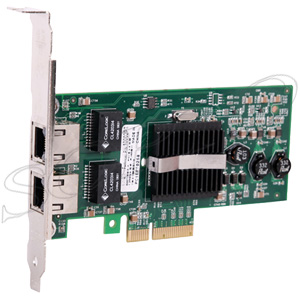-

- Sopto Home
-

- Special Topic
-

- PCI-E Card Knowledge
-

- How Can I Tell the Difference between PCI, and PCI-X and PCI Exp
PCI-E Card Knowledge
- Info about Network Interface Card Teaming
- How to Setup a Server with Multiple Network Interface Adapters?
- How to Reconnect an Internet Network Adapter for an Acer Aspire?
- 9 Things to Do When Your Internal Network Card Stops Working
- Ethernet Standards NIC for Home Networking
- What Is a Network Interface Adapter?
- How to Configure a Network Interface Card in Linux?
- How should Configure Your NIC for ISA and TMG?
- Recommended Network Card Configuration for Forefront UAG Servers
SOPTO Special Topic
Certificate



Guarantee
Except products belongs to Bargain Shop section, all products are warranted by SOPTO only to purchasers for resale or for use in business or original equipment manufacturer, against defects in workmanship or materials under normal use (consumables, normal tear and wear excluded) for one year after date of purchase from SOPTO, unless otherwise stated...
Return Policies
Defective products will be accepted for exchange, at our discretion, within 14 days from receipt. Buyer might be requested to return the defective products to SOPTO for verification or authorized service location, as SOPTO designated, shipping costs prepaid. .....
Applications

PCI-E NIC Cards provide redundant connectivity to ensure an uninterrupted network connection.
PCI-E NIC Cards are ideal for VM environments with multiple operating systems, requiring shared or dedicated NICs.
They are specially designed for desktop PC clients, servers, and workstations with few PCI Express slots available.
SOPTO Products
- Fiber Optic Transceiver Module
- High Speed Cable
- Fiber Optical Cable
- Fiber Optical Patch Cords
- Splitter CWDM DWDM
- PON Solution
- FTTH Box ODF Closure
- PCI-E Network Card
- Network Cables
- Fiber Optical Adapter
- Fiber Optical Attenuator
- Fiber Media Converter
- PDH Multiplexers
- Protocol Converter
- Digital Video Multiplexer
- Fiber Optical Tools
- Compatible
Related Products
Performance Feature
PCI-E Card Knowledge
Recommended


How Can I Tell the Difference between PCI, and PCI-X and PCI Express?
A connection between any two PCIe devices is known as a "link", and is built up from a collection of 1 or more lanes. All devices must minimally support single-lane (x1) links. Devices may optionally support wider links composed of 2, 4, 8, 12, 16, or 32 lanes. This allows for very good compatibility in two ways.
A PCIe (PCI-Express) card will physically fit (and work correctly) in any slot that is at least as large as it is (e.g. an x1 card will work in an x4 or x16 slot), and a slot of a large physical size (e.g. x16) can be wired electrically with fewer lanes (e.g. x1 or x8; however it must still provide the power and ground connections required by the larger physical slot size). PCI Express slots are not compatible with PCI or PCI-X expansion cards.
Is there a difference between PCI-X and PCI-Express? Yes. Are the compatible with each other? No
How do I know if what slot I have? And what is the difference?
PCI is also annoyingly called "Conventional PCI" (like there's an unconventional version?). This is good old 32 and 64 bit PCI that you've come to know and love. The PCI spec has been undergoing a significant set of changes over the years to try to keep pace with speed and system advances. One thing you probably haven't noticed (and don't care about unless you're a hardware guy) is a change from 5V signaling to 3.3V. The spec to which vendors are implementing now is PCI V2.2; there is a PCI V2.3 and PCI V3.0 already defined. Are you asleep yet?
PCI-X -- The PCI SIG likes to call this "High performance, backward compatible PCI for the future" which just means that the PCI SIG is not lacking marketing people. PCI-X uses all the same connectors and stuff as "conventional" PCI. The transfer speed is indicated by the goofy moniker added to the end, as in "PCI-X 66" (which supports a 66MHZ clock rate) or "PCI-X 133" (which supports a 133 MHz clock rate). Because the data is transferred in parallel, either 32 or 64 bits at a time (or even 16 bits at a time, don't ask), this means that PCI-X 133 offers a bandwidth of 1.0GB/second, and PCI-X 533 could offer a bandwidth of 4.3GB/second. That's all theoretical, of course. If anybody ever builds a system that supports PCI-X 533, drop me a line, OK?

PRO/1000 PT Dual Port Server Adapter
PCI Express -- This is entirely new bus architecture, previously known by the name "3GIO." It's got new connectors and everything. It even defines a new PC Card (PCMCIA) standard called Express Card. How different is PCI Express from stuff that came before it? Well, for one thing, it performs serial data transfers and it starts with a base transfer rate of 2.5 Gb/second. Data is transferred in packets, and effectively routed via a switch. Transfers are bi-directional, so data can flow to and from a device simultaneously. Since data is switched, more than 1 device can be transferring at the same time.
What's even more fun about PCI Express is that cards can utilize as many as 16 transfers in parallel, thus providing (are you ready for this??) up to 8GB/second total throughput (4GB/second in each direction). These parallelized serial transfers are what are referred to as "PCI Express x8" (pronounced "by eight", by the way) for 8 parallel bit streams or "PCI Express x16" for 16 parallel bit streams. And, here's some cool news: AGP is being replaced with x16 PCI Express connections.
For more information, please contact a Sopto representative by calling 86-755-36946668, or by sending an email to info@sopto.com.




